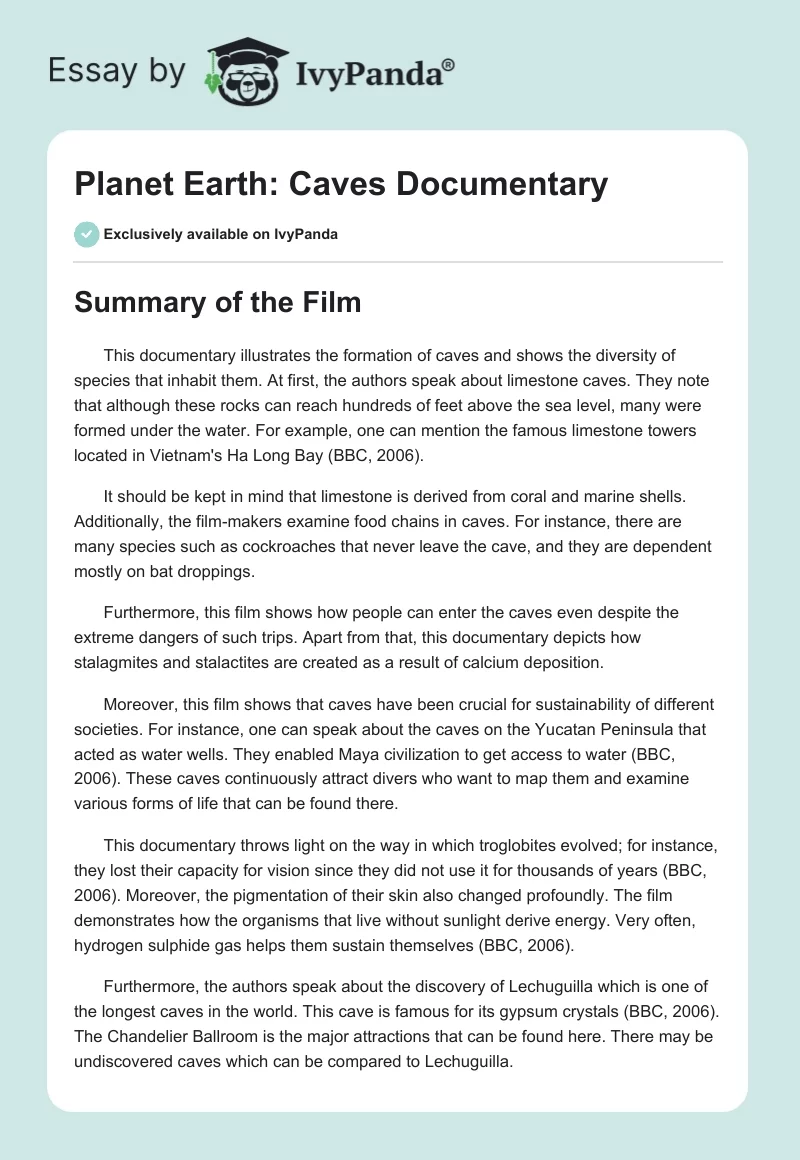Summary of the Film
This documentary illustrates the formation of caves and shows the diversity of species that inhabit them. At first, the authors speak about limestone caves. They note that although these rocks can reach hundreds of feet above the sea level, many were formed under the water. For example, one can mention the famous limestone towers located in Vietnam’s Ha Long Bay (BBC, 2006).
It should be kept in mind that limestone is derived from coral and marine shells. Additionally, the film-makers examine food chains in caves. For instance, there are many species such as cockroaches that never leave the cave, and they are dependent mostly on bat droppings.
Furthermore, this film shows how people can enter the caves even despite the extreme dangers of such trips. Apart from that, this documentary depicts how stalagmites and stalactites are created as a result of calcium deposition.
Moreover, this film shows that caves have been crucial for sustainability of different societies. For instance, one can speak about the caves on the Yucatan Peninsula that acted as water wells. They enabled Maya civilization to get access to water (BBC, 2006). These caves continuously attract divers who want to map them and examine various forms of life that can be found there.
This documentary throws light on the way in which troglobites evolved; for instance, they lost their capacity for vision since they did not use it for thousands of years (BBC, 2006). Moreover, the pigmentation of their skin also changed profoundly. The film demonstrates how the organisms that live without sunlight derive energy. Very often, hydrogen sulphide gas helps them sustain themselves (BBC, 2006).
Furthermore, the authors speak about the discovery of Lechuguilla which is one of the longest caves in the world. This cave is famous for its gypsum crystals (BBC, 2006). The Chandelier Ballroom is the major attractions that can be found here. There may be undiscovered caves which can be compared to Lechuguilla.
Reference List
BBC (2006). Caves [Television Broadcast]. In Planet Earth. England: British Broadcasting Corporation.


